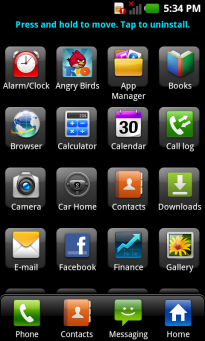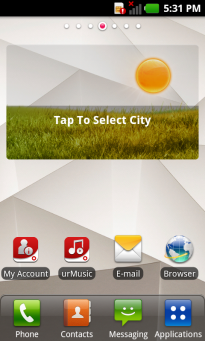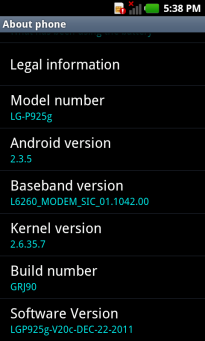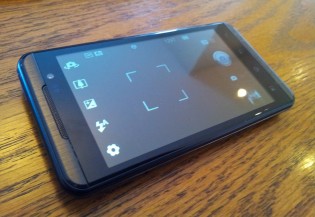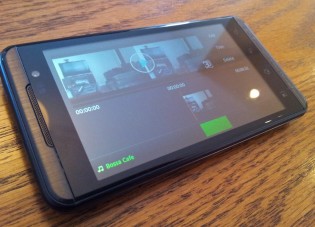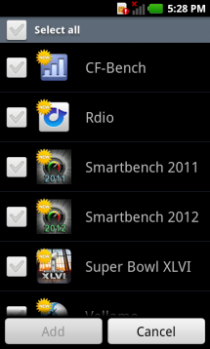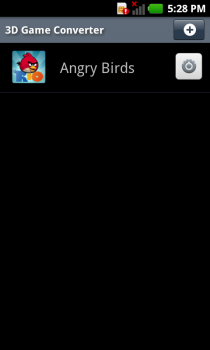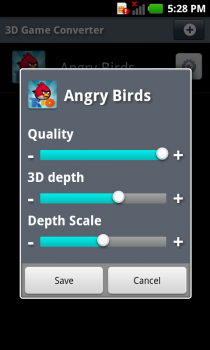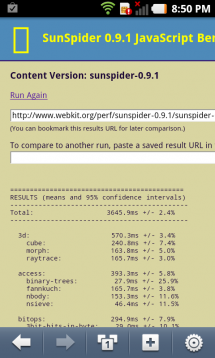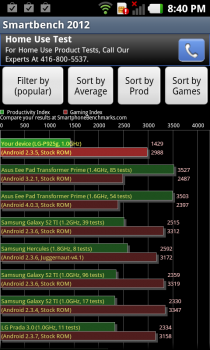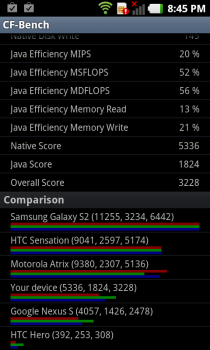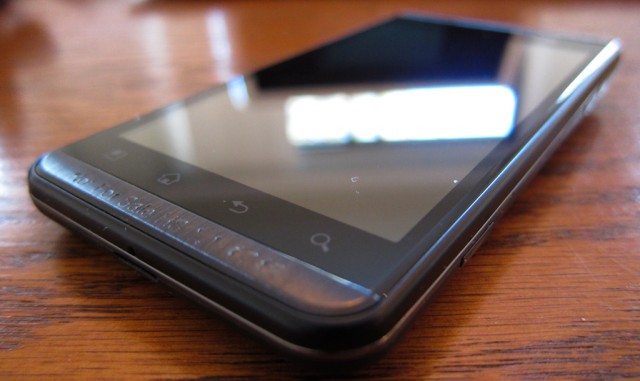
The LG Optimus 3D was, and still is, a formidable device to see and to hold. But its considerable weight and ample specs were hampered by a relatively half-baked and poorly-performing operating system running on Android 2.2 Froyo.
Nearly six months after our initial review, the device has been updated to Android 2.3.5 Gingerbread with a few notable improvements to not only overall performance but its 3D capabilities. As we told you last week, LG has taken what arguably used to be a gimmick and created a versatile 3D-capable phone. Much of the interface is identical, but in this slimmed-down and simplified skin, much has improved. Let’s take a look at a few of the notable ones.
Overall Look and Feel
Much of the UI has stayed the same, which is to say there have been no improvements to LG’s rather muddled, candy-coated overlay. There is a permanent, non-editable dock at the bottom of the device, while the app drawer is still divided into Categories, the top of which focuses on all the 3D apps and portals.
We noticed that response times were a bit snappier than in Froyo, likely owed to the myriad speed improvements Google made under the hood in Gingerbread. The keyboard has also been updated to the better-but-not-quite-good-enough Gingerbread iteration, so autocorrect and accuracy is a notch above its predecessor.
LG also managed to eek out a few more bits from its baseband chip, increasing network speeds from 14Mbps to 21Mbps in the download. While welcome, we saw no appreciable improvements in daily use on the Rogers network.
3D Imaging
Because the Optimus 3D uses its two 5MP cameras to form a stereoscopic image, it’s quite interesting to see how much better LG made the photo- and video-taking experience. According to the changelog, HD 3D video is now recorded at 12Mbps, up from around 8Mpbs, and video stabilization has been implemented in both 2D and 3D mode. As well, 3D depth has been increased.
At once we noticed these improvements: not only did the app itself respond better, but 3D photos and videos were noticeably improved in their clarity and delineation between front and background objects. Whereas before if I took a photo of a nearby object it was difficult, in 3D mode, to differentiate it from its background, this is now clearly distinguishable in the new update.
LG included a couple gimmicky features, too, in relation to its 3D imaging capabilities. 2D photos and video can now be converted into 3D, and vice versa, which is likely because even if you’re taking a photo or video with one lens, the other one is capturing the same information; LG just makes it easy to incorporate that data from the second lens in one tap.
3D For Everyone
LG brought two more “big features” to the Gingerbread update: a 3D-capable video editor, and a 2D-to-3D game conversion tool.
The first is a pretty basic app which allows you to take captured video, photos and stored audio, and piece them all together on the device. Like a simplified version of iMovie for iPhone, the Video Editor allows you to trim existing clips, paste multiple clips and add music to the entire performance. You cannot cross-contaminate dimensions though: 3D videos cannot be tacked onto exiting 2D ones and vice versa, nor can you add a 720p video to an existing VGA clip.
The 3D Game Converter app allows you to take OpenGL-compatible games — which most are these days — and use their data to interpret them in 3D. You can adjust Quality, 3D Depth and Depth Scale, and for the one pre-installed game we tried, Angry Birds Rio, the effect was overwhelmingly positive. The forward plane — the birds, pigs and structures — were clearly in front of the background objects, and though the effect was a little difficult to maintain based on the need to move the device around, for the time we spent with it were enjoyed it thoroughly.
Strangely, though, the app found all OpenGL-compatible apps, including many of the benchmark suites that we use like Smartbench and CF-Bench. There doesn’t seem to be any benefit to those apps, but perhaps LG’s system may be used for other less game-oriented purposes down the road.
No Ice Cream Just Yet
The worry one has in buying an Android phone these days is how much longer after Google debuts its newest operating system will your device receive it. The upshot of having a device like the LG Optimus 3D is that so much more goes into its software, from design to individual apps, than just the base Google code, that it is inevitable for updates to be prolonged and even delayed. That we saw the Gingerbread update only six months after its debut is something of a miracle.
The Optimus 3D was a pretty powerful device when it arrived and it still is. Unlike HTC’s EVO 3D, which focuses mainly on the camera and video capabilities and less on 3D gaming, LG has done a great job keeping the fledgling technology relevant. For existing owners the arrival of Gingerbread will not only reinforce that the company has your best interests at heart, but that they are helping to bring what was thought to be a gimmick into the mainstream.
As for battery life improvements, LG claims that there is now a low-level “sleep” mode which is enabled when the screen is turned off and music is being played back. We can attest to the fact that the Optimus 3D’s battery life was not stellar upon release, but hopefully with Gingerbread’s built-in efficiency, alongside this “deep sleep music state,” things will improve.
As for an Ice Cream Sandwich update, we’re looking at a Q3 release for all 2011 LG devices, including the Optimus 3D. Until then, enjoy the improved app compatibility, UI performance and 3D imaging improvements.
MobileSyrup may earn a commission from purchases made via our links, which helps fund the journalism we provide free on our website. These links do not influence our editorial content. Support us here.

